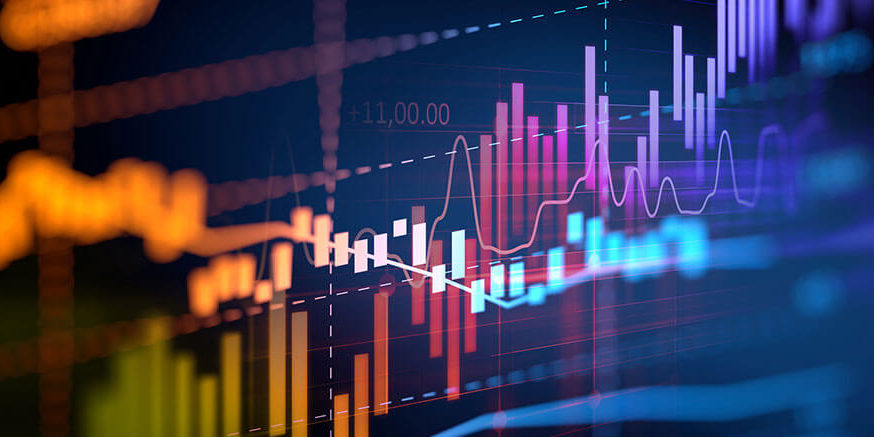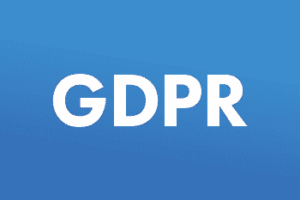Have you ever wondered why traffic signals are based on color rather than text? We see the green walk sign or the red stop light and they immediately get us to react. With vision being our dominant sense, humans are wired to consume and understand visual information.
Over the years, it has been noted that anywhere from 30% to 50%+ of the brain’s cortex is devoted to visual processing. Additionally, it is estimated that 80-85 percent of our perception, learning, cognition, and activities are mediated through vision. With around 2.5 quintillion bytes of data created daily and the vast majority of data generated in recent years, it’s imperative to find new ways to sift and sort through the information we encounter. These are just some of the reasons why every industry is beginning to leverage data visualization to arrive at better business decisions, faster.
Raw data is growing exponentially and there are just not enough data scientists to make sense of these piles of data nor to present it visually for interpretation. Data visualization software is the best way to see the big picture at once. By using visualization methods suited to each business, decision-makers at all levels can access data and pinpoint the best ways of moving ideas forward more easily.
Here are three outstanding reasons that data visualization can impact your business in a positive way:
Reason 1: Provides Multiple Perspectives for Analysis
Businesses often rely on spreadsheets or other static representations like charts or graphs of their data. The pitfall here is that a single representation might mean a higher possibility of misinformation. Data visualization, on the other hand, makes it possible to interact with real-time data and to drill it down or search through to find hidden facts and new concepts.
The underlying data model–for which data visualization is the interface–stores extracted data along with their relationships. For a specific task, a user can extract the information they need and create a separate window for further exploration. In the manufacturing industry, for example, when the overall data shows that a particular product has topped the expected sales target – it’s wonderful news. However, drilling down might provide a different perspective.
Using territory mapping and other software, we can quickly open sales data for different regions to see where the product is underperforming. Action can be immediately taken, such as reassigning a sales person to the underperforming areas. With today’s technology, decisions can even be made on the go, from any device that is connected to the internet.
Reason 2: Assists Faster Action on Emerging Trends
Let’s start with surveys that back data visualization strengths in timely information. Organizations that use data discovery tools are 28% more likely to find emerging trends faster than those relying on managed reporting. Additionally, a survey of 241 global executives revealed the majority believe that allowing employees greater access to big data would increase the quality and efficiency of decisions. Collaboration and involvement of employees across business levels require the data to be easily accessible and understandable.
Data visualization can reveal data trends when applied to complex numbers that have substantial ROI. This is best illustrated using the shipping and carrier logistics industries to indicate where substantial optimization opportunities can be revealed
- Data visualization gives the ability to see the supply chain system at every point, to address possible bottlenecks in advance and rectify minor issues before they spin out of control.
- Carriers can decrease less-than-truckload (LTL) shipments, decrease dunnage and maximize load space, thus passing benefits to shippers, as well.
- Businesses can maximize off-peak shipping to offer lower rates.
Reason 3: Aiding a Unified Business Vision
Every organization faces the challenge of ensuring that all departments contribute to a unified business vision and capitalize on important trends. It’s not easy to arrive at this goal because it requires integration of all data management systems like ERP and CRM. Once data silos are eliminated, data visualization can provide a transparent and unified view. The impact of various departments like manufacturing, delivery, service and even HR and Finance on key business outcomes like profits and customer retention are tangible. While such a view might be limited to CEOs, directors and other top executives, it’s a must in today’s competitive market.
Data correlations are what visualization of big data is all about. Connecting the dots between delayed manufacturing and loss of customers could be the solution to ensuring business goals are not derailed along the way. At the end of the day, data visualization is valuable only if it can drive employees to action.
If you are interested in tapping into the power of data visualization, the team at 7T is ready to show you how this approach can benefit your company. Our analytics platform Sertics connects users with tools for data mapping, database creation, model selection, and data visualization. Interactive models allow the data to stay current for analysis, revealing insights that optimize forecasting and predictive decision making. Call us today!









